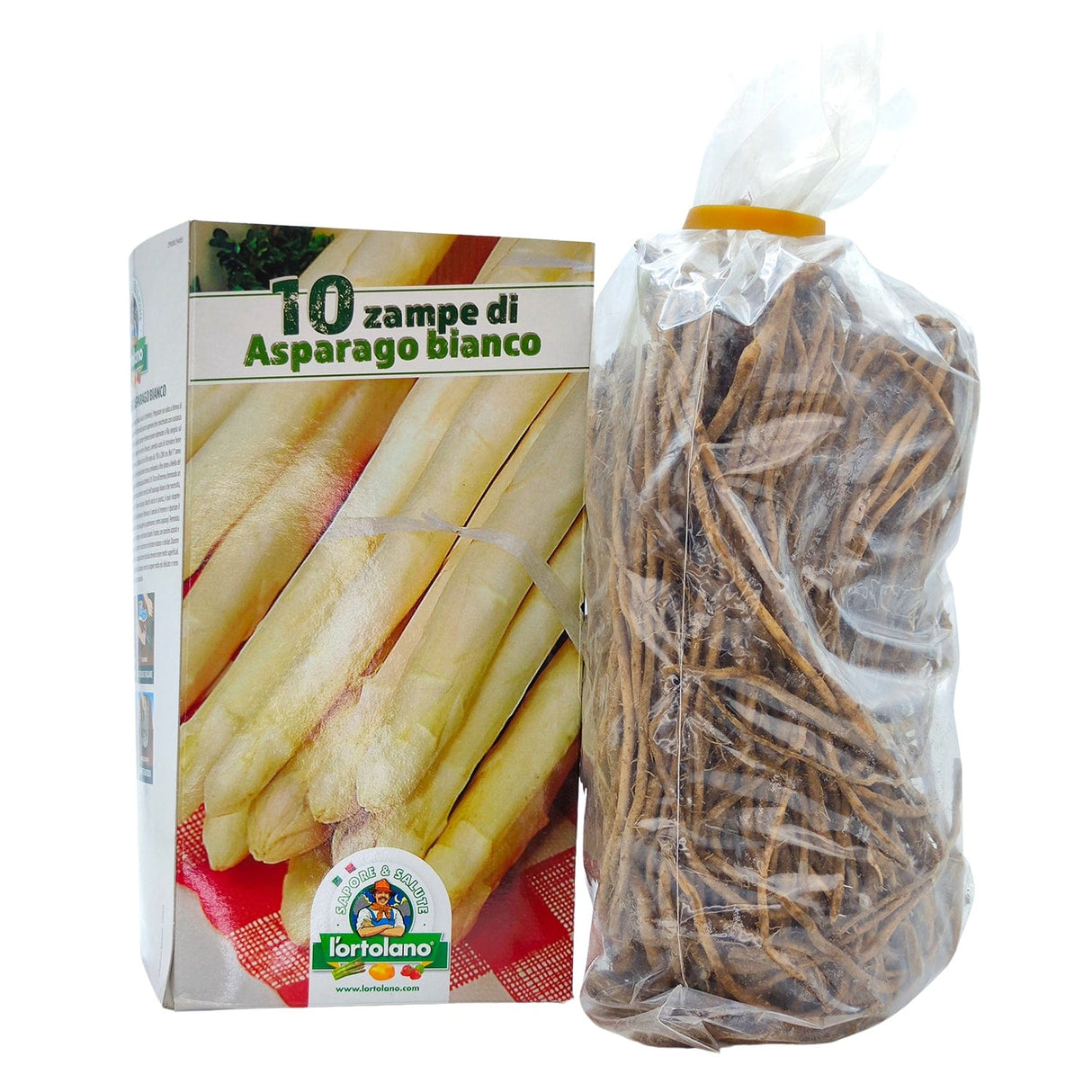10 Legs Classic White Asparagus - L'Ortolano
10 Legs Classic White Asparagus - L'Ortolano is backordered and will ship as soon as it is back in stock.
Spedizione in Italia ed Europa
Spedizione in Italia ed Europa
Con un ordine di soli 79,00 €, consegna GRATIS in Italia, altrimenti paghi solamente € 7,90
Spedizione in Italia con GLS e TNT IN 24h/72h, tranne le disagiate che richiedono un 1 giorno in più, con Fedex e Ups 4/5 giorni in Europa
Pagamenti
Pagamenti
✔ Paypal, anche in 3 rate senza interessi
✔ Carta di Credito (Visa, Mastercard e American Express)
✔ Scalapay e Klarna: 3 Rate senza interessi
✔ Bonifico Bancario
Description
Description
The package contains 10 paws.
How to Grow White Asparagus:
It adapts preferably to loose or light soils and without skeleton. Prepare a furrow in the shape of an inverted trapezium 15-20 cm deep, 30 cm wide at the base and 40-50 cm at the top, well fertilized with organic substance. The optimal time for transplanting is from November to April. The legs must be arranged in a single row on the bottom of the furrow and spaced 30 cm apart (3 legs per linear meter), taking care to spread the roots well horizontally and cover them immediately with 5 cm of soil. The distance between the rows varies from 150 to 200 cm. In the 1st year of planting, the furrow is gradually covered as the vegetation grows, reaching ground level by the end of the year. In the second year (early spring) an additional 20-30 cm of soil must be brought back to the asparagus bed. A mound will form, which is essential for the correct growth of white asparagus, which requires an environment without light for its optimal development. To have white asparagus even at the tip, you can cover the asparagus bed with black polyethylene. Once the harvest is over (late spring), remove the pile of soil and bring the ground level back to horizontal. It will be covered again the following year as soon as the first asparagus sprout. For summer and autumn cultivation, proceed as for green asparagus (see above). White asparagus has a much more delicate and less marked flavour than green asparagus. It is highly appreciated, since it has less fibre than green asparagus and is therefore all edible.
In spring, with the rise in temperature, the buds begin to develop, forming shoots that emerge from the ground. When their height is satisfactory, before the tip opens, the asparagus can be harvested. It is important to cut the asparagus below ground level. Harvesting normally lasts for about 60-70 days, after which it is advisable to stop harvesting to revitalize your plant. The unharvested shoots grow in height, open the tips and give rise to foliage. The aerial part, which reaches 1.5 m in height in adulthood, begins to process the useful substances absorbed from the soil. In this phase (summer) it is important to carry out fertilization, especially nitrogen-based. In late autumn the foliage begins to yellow and when it is completely dry it should be cut level with the ground and removed. After this operation, abundant organic fertilization and possible earthing up are recommended to optimally cover the productive cordon.



